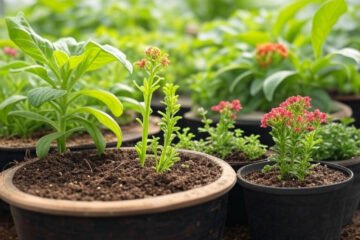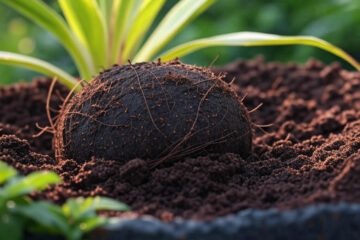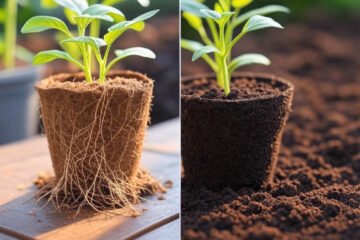
Coco Peat Uses
Comprehensive Guide to Coco Peat Uses: Benefits, Applications and Best Practices
Introduction to Coco Peat
Coco peat, also known as coir pith or coconut coir, has revolutionized sustainable gardening and agricultural practices worldwide. This remarkable organic growing medium is derived from coconut husks, specifically the fibrous material found between the hard internal shell and the outer coat of the coconut. As we continue to seek eco-friendly alternatives in horticulture, coco peat stands out as a renewable and biodegradable resource with numerous applications.
In this comprehensive guide, we will explore the extensive uses of coco peat, its remarkable benefits, and how we can incorporate this versatile material into various gardening and agricultural practices. From soil amendment to hydroponic growing medium, coco peat offers solutions that promote healthier plant growth while supporting environmental sustainability.
What Exactly Is Coco Peat?
Before diving into its applications, it’s essential to understand what coco peat is. During coconut processing, the long fibers of the husk are extracted for making ropes, mats, and brushes, leaving behind a byproduct known as coco peat. This lightweight, spongy material undergoes washing, heat treatment, and sieving to remove excess salts and impurities, resulting in a clean, consistent growing medium.
The physical structure of coco peat consists of millions of micro-sponges that efficiently retain water while maintaining excellent aeration properties. This unique combination makes it superior to many traditional growing media. Its pH level typically ranges from 5.5 to 6.8, making it suitable for a wide variety of plants.
Key Benefits of Using Coco Peat
Superior Water Retention and Drainage
One of the most significant advantages of coco peat is its exceptional water retention capacity. It can hold up to 8-10 times its weight in water, ensuring plants have consistent access to moisture. Simultaneously, it provides excellent drainage and prevents waterlogging, creating an ideal balance for healthy root development.
Enhanced Aeration and Root Health
The fibrous structure of coco peat creates numerous air pockets within the growing medium. This enhanced aeration promotes oxygen flow to plant roots, reducing the risk of root rot and encouraging robust root development. The result is stronger plants with improved nutrient uptake capabilities.
Environmentally Sustainable
As a byproduct of coconut processing, coco peat represents a renewable resource that would otherwise be waste material. Its production requires minimal energy input compared to peat moss extraction, which often involves destroying valuable wetland ecosystems. Additionally, coco peat is fully biodegradable, making it an environmentally responsible choice for conscious gardeners.
Pest and Disease Resistance
Through the processing methods used in its production, coco peat becomes naturally resistant to many common soil-borne pathogens and pests. This inherent quality reduces the need for chemical treatments and promotes healthier plant growth from the start.
Primary Applications of Coco Peat
Soil Amendment and Conditioning
Perhaps the most widespread use of coco peat is as a soil conditioner. When mixed with garden soil, it significantly improves both water retention and drainage properties. This dual benefit is particularly valuable in areas with poor soil quality or extreme weather conditions.
For clay soils, adding coco peat helps break up the compaction, improving drainage and allowing roots to penetrate more easily. In sandy soils, it increases water retention, reducing the frequency of watering and helping to preserve valuable nutrients that might otherwise leach away.
The recommended ratio for soil amendment typically ranges from 30% to 50% coco peat mixed with existing soil, depending on the current soil condition and the specific needs of the plants being grown.
Seedling and Plant Propagation
Coco peat provides an excellent medium for seed germination and young plant development. Its sterile nature reduces the risk of damping-off disease, while its moisture retention properties ensure seeds remain consistently hydrated during the critical germination phase.
For cuttings and plant propagation, coco peat offers the perfect balance of moisture and aeration that encourages rapid root development without the risk of rotting. Many professional nurseries have adopted coco peat as their preferred propagation medium due to these beneficial qualities.
Hydroponic Growing Medium
In soilless cultivation systems, coco peat has gained tremendous popularity as a primary growing medium. Its ability to hold water while maintaining air spaces makes it ideal for hydroponic and semi-hydroponic setups. Unlike rock wool and other synthetic media, coco peat is renewable and biodegradable, aligning with sustainable growing practices.
When used in hydroponics, coco peat provides plants with structural support while facilitating nutrient solution delivery directly to the root zone. This efficiency results in accelerated growth rates and higher yields compared to traditional soil cultivation.
Container Gardening and Potting Mix
For container gardens and potted plants, coco peat serves as an excellent base material for custom potting mixes. Its lightweight nature makes it perfect for rooftop gardens, balconies, and indoor plant displays, where weight considerations are important.
A typical coco peat-based potting mix might include:
- 60-70% coco peat
- 20-30% perlite or pumice for additional drainage
- 10% worm castings or compost for nutrition
This combination creates a well-balanced growing environment that supports healthy plant growth while requiring less frequent watering than conventional potting soils.
Specialized Applications of Coco Peat
Green Roof Installations
The lightweight nature and excellent water management properties make coco peat an ideal component for green roof systems. It helps reduce the overall weight load while providing an effective growing medium for roof vegetation. The water retention capability helps maintain plant health during dry periods, while its drainage characteristics prevent excessive weight accumulation during rainy seasons.
Erosion Control and Landscaping
In slope stabilization and erosion control projects, coco peat plays a valuable role in establishing vegetation on challenging sites. When mixed with soil and seeds, it helps retain moisture necessary for germination while preventing soil runoff during rain events. The fibrous structure also helps bind soil particles together, further reducing erosion risk.
Mushroom Cultivation
The consistent moisture level and sterile nature of coco peat make it an excellent substrate for mushroom growing. Many varieties of edible and medicinal mushrooms thrive in coco peat-based substrates, providing an economic alternative to traditional growing methods.
Worm Farming and Vermicomposting
For vermicomposting systems, coco peat serves as an ideal bedding material for worms. It retains moisture that worms need while providing adequate aeration. As worms process organic waste materials, the coco peat becomes enriched with valuable nutrients and beneficial microorganisms, creating an even more valuable growing medium.
Best Practices for Using Coco Peat
Preparation Before Use
To achieve optimal results with coco peat, proper preparation is essential. Most commercial coco peat products come in compressed bricks or blocks that require rehydration before use. We recommend soaking the compressed material in water until it expands fully, typically reaching 5-7 times its original volume.
For sensitive plants, it’s advisable to rinse the coco peat thoroughly before use to remove any residual salts. This process, known as buffering, helps create an optimal growing environment right from the start.
Nutrient Management
Unlike traditional soil, fresh coco peat contains minimal plant nutrients. When using coco peat as a primary growing medium, regular fertilization becomes essential for plant health. Many growers opt for specially formulated coco-specific nutrient solutions that account for the medium’s unique properties.
Coco peat has a natural tendency to bind with calcium and magnesium, potentially making these nutrients less available to plants. To address this characteristic, supplemental Cal-Mag products are often recommended as part of the regular feeding program.
pH Monitoring and Adjustment
While coco peat generally has a favorable pH range for most plants, monitoring and occasional adjustment remain important for optimal growth. The ideal pH range for most plants grown in coco peat is between 5.8 and 6.5.
Regular testing using a reliable pH meter helps ensure conditions remain within this optimal range. For adjustments, organic pH up/down products can be used according to the manufacturer’s instructions.
Sustainable Aspects of Coco Peat
Reducing Carbon Footprint
By utilizing what would otherwise be waste material from coconut processing, coco peat production helps reduce agricultural waste while creating a valuable product. Its renewable nature stands in stark contrast to peat moss, which is harvested from peat bogs that take thousands of years to form.
Reusability Potential
With proper sterilization between growing cycles, coco peat can be reused multiple times before it breaks down completely. This reusability further enhances its sustainability credentials and provides economic benefits for commercial growers.
Conclusion
Coco peat represents one of the most versatile and environmentally friendly growing media available today. Its exceptional water management capabilities, combined with excellent aeration properties, make it suitable for countless applications across home gardening, commercial agriculture, and specialized growing systems.
As we continue to embrace sustainable gardening practices, coco peat stands out as a renewable resource that offers tremendous benefits without compromising ecological values. Whether you’re starting seeds, amending garden soil, establishing a hydroponic system, or engaging in specialized cultivation, coco peat provides solutions that support plant health while promoting environmental responsibility.
By understanding and implementing the best practices outlined in this guide, we can maximize the benefits of this remarkable material while contributing to more sustainable growing practices worldwide.



